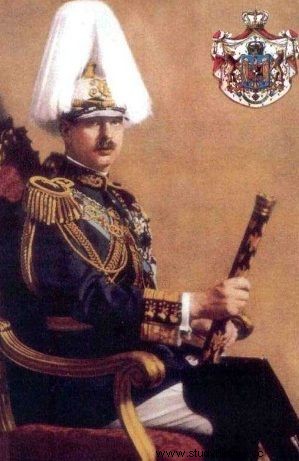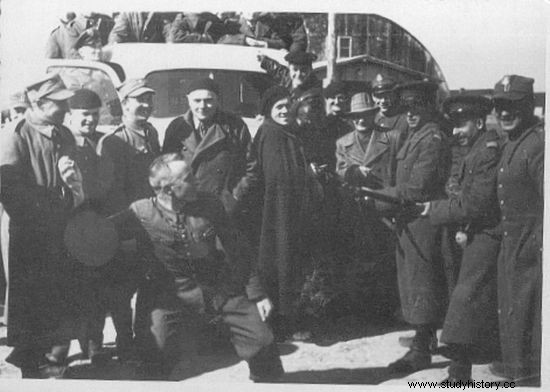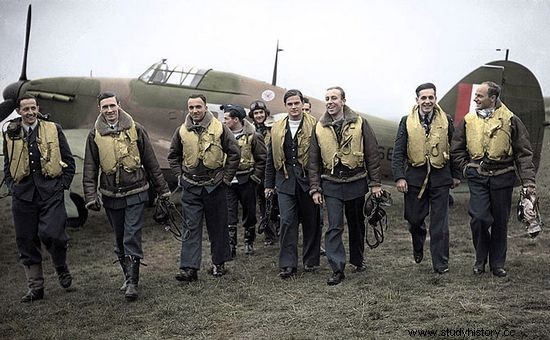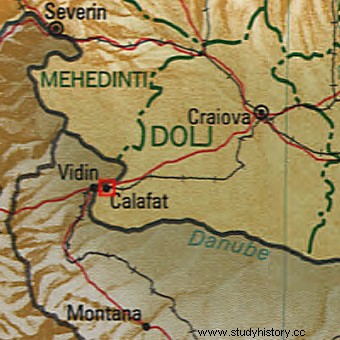Polish airmen gained publicity on almost every front of the war with Hitler. However, in order to achieve their numerous victories in air combat, they had to make their way to the West first. For many of them, the first step was to get out of the Romanian camps where they were interned after the September Campaign. Their escapes are, in many cases, ready-made action comedy scenarios!
Polish-Romanian relations in the interwar period were excellent. We concluded a military and economic alliance, and the guarantee of friendship were frequent visits by civilian and military dignitaries on both sides of the border. By the end of the 1930s, however, the state ruled by King Charles II was heavily influenced by the Third Reich.
Out of fear of Hitler's military might, in September 1939 the Balkan monarchy proclaimed - admittedly benevolent, but only - neutrality. What did that mean? Well, the Polish soldiers crossing the border had to take into account that they would be locked up in internment camps. Pilots were a significant proportion of them.

Fearing the might of the Third Reich, Romanian monarch Charles II decided to keep his country neutral. However, these were neutrality favorable to Poles.
Step one:escape from the camp
Most of our aces of the skies did not break down with defeat and they wanted to get to France as soon as possible to join the Polish Army being formed there. But first, you had to get out of the sight of the Romanian guards.
Fortunately, initially the Romanians did not really disturb the Polish soldiers who felt the call of freedom. As he wrote in his memoirs - quoted in Sławomir Kopra's book “Polskie hellko. Pictures from the life of the émigré elite 1939-1945 "- Władysław Kisielewski interned in Calafat:
The first batch escaped from the camp very easily. They pulled a large barrel on wheels from the shed that would normally be used to carry water, loaded things inside and dragged, shouting in Romanian:
- Apa! [ie water - article author's note]
The sentry, convinced that they were going to fetch the water, opened the gate and let all the party go. Fifteen minutes later, a large group of soldiers marched out of the camp, carrying boards from a specially demolished building in backpacks. They were led by a friend dressed in the uniform of a Romanian guard. And these were also released by the sentry without any problems.

After crossing the border with Romania, many soldiers were interned. However, as you can see in the photo above, the relationship between the guards and their charges was friendly.
Some were even more insolent . A dozen or so flyers, while swimming in the Danube, simply left with the flow in boats that had been rented earlier from the local peasants. Their "guardians" believed that the unfortunates had drowned, because their clothes had been left on the shore to hide them. Of course, these were the worst rags that could be found in the camp.
After all, this irritated Romanians who were fed up with pounding them! As a result, the guards were strengthened and the issuing of passes was suspended. In this situation, the main task before the planned escape was to get and hide civilian clothes. Of course, it was not a problem for inventive Poles. The locals were eager to sell clothes - although they were of poor quality - and the perfect hiding place for internees in Celafat turned out to be ... tombs in a nearby cemetery.
Ghost game
It was only necessary to make sure that no unauthorized person was hanging around the necropolis. For this purpose, a rumor was spread that the cemetery was haunted. To make this story credible, every evening one of the internees, wearing a sheet, pretended to be a ghost . It turned out that the locals easily believed in ghosts from the afterlife and no one even tried to approach the necropolis, and the "evacuation" operation was progressing successfully. However, there were some funny mishaps.
Once - due to a schedule error - two "ghosts" were assigned to perform "service" at the same time. As a result - as noted by Kisielewski:
Dressed in traditional robes, without knowing anything about themselves, they met unexpectedly in the middle of the cemetery. Each of them - a little flustered by the atmosphere of the cemetery - thought that he had a real ghost in front of him. They were petrified with fear, they stood quite still for some time, looking at each other. Finally one moved. It was enough for both of them - howling like alarm sirens - to run away .

Many of the 303 Squadron pilots had to flee Romanian internment before having a chance to show what they could do in England. Many of these stories are a ready-made adventure movie script.
The unfortunates wanted to get to the only cemetery gate as quickly as possible, and they almost managed to do so when they suddenly collided with each other. It was way too much for one of them and he just passed out out of fear.
Another time, bored with the monotonous worthy "ghost" decided to leave the cemetery and scare the area. However, he was unlucky. The Romanian, whom he wanted to frighten, was very drunk - our pilot had also drunk a lot of Romanian wine earlier - and instead of running away, catching the stick, he started to hit the "night dream". In this situation, the Pole had no choice but to seek shelter in thick corn.

One of the camps for interned Polish pilots was in Calafat. It was in the local cemetery where "ghosts" were prowling.
Step two:get documents and off you go
After the escape, it was necessary to obtain documents authorizing him to leave Romania. Here, of course, the Polish embassy in Bucharest turned out to be irreplaceable. Those who qualified for the trip were photographed and fake professions were invented. As Sławomir Koper notes in his book:
the young ladies working on this job had a lot of fun at times. The well-known womanizer pilot Jan Zumbach became a seminarian, and another womanizer, Witold Urbanowicz - a monk.
Nevertheless, the production of new documents took a lot of time. Romanian policemen took advantage of this, for whom the refugees became a great source of income. They specialized in catching Polish soldiers - who, as we know, should be in internment camps - and extorting bribes from them for release.

Fortunately, they were not too high, and as there were no problems with the exchange of Polish zlotys for funnels, the evil practice flourished.
Once you had civilian clothes and the appropriate papers in hand, you could move towards the Romanian coast and catch a ship bound for French Syria. Most of the airmen chose the airport in Balchik (now within the borders of Bulgaria). Here too, bribes were necessary.
Thanks to them, the police and border guards turned a blind eye to the thousands of Poles wandering around the waterfront . What a fine example of collective blindness! Nevertheless, efforts were made to keep at least appearances, and passport inspectors before boarding even detained someone to clarify the real data. As you might guess, the stack of banknotes quickly dispelled all doubts.
This was the path of many of the later aces of the skies to the Polish army created in the West. Many of them were to play a significant role during the Battle of Britain, but if it were not for their ingenuity and favor of the Romanians, they would probably never have made it there. Who knows how the English would have fared without our help then?
Source:
- Sławomir Koper, Polish hell. Pictures of the life in exile 1939-1945 , Bellona, Warsaw 2012.
